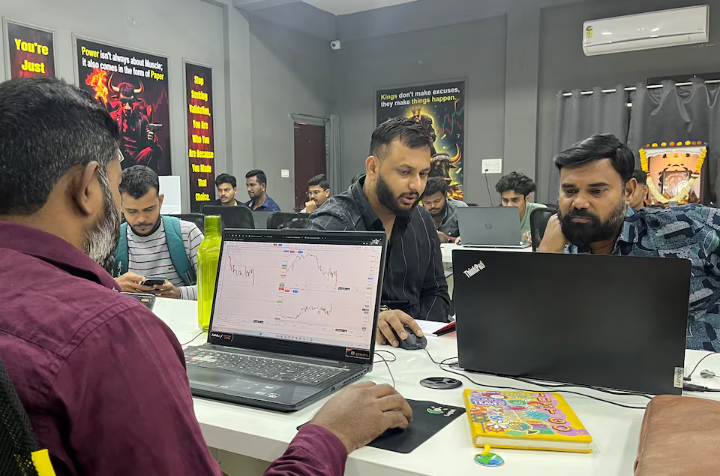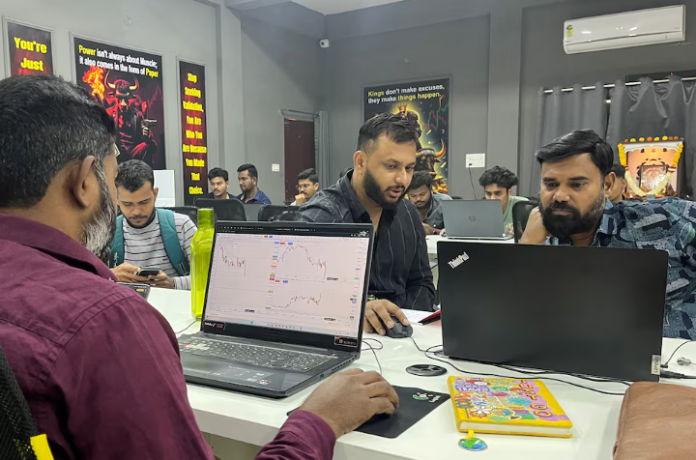In India’s smaller cities, cryptocurrency trading is rapidly gaining traction as young professionals and small business owners look for alternative sources of income. The trend is driven by limited job opportunities, sluggish wage growth, and increasing regulatory restrictions on traditional stock market derivatives.
A New Wave of Crypto Traders
In Nagpur, Maharashtra, 28-year-old Ashish Nagose, a flower shop owner, has been learning the ins and outs of cryptocurrency trading. After previously dabbling in stock options, he switched to crypto due to stricter regulations on equity derivatives. For Nagose, crypto trading is a safety net that helps sustain his family business during slow seasons.
“I want to continue running our flower shop, but trading helps keep my income stable when business slows down, like after Diwali,” he says, surrounded by fresh roses and marigolds at his shop.
Like Nagose, thousands of young Indians in tier-2 and tier-3 cities are turning to cryptocurrency as a means of supplementing their income. According to data from CoinGecko, trading volumes on India’s four largest crypto exchanges surged more than twofold in the last quarter of 2024, reaching $1.9 billion.
Why Crypto?
With nearly two-thirds of India’s 1.4 billion population under 35, many young people are actively seeking financial opportunities beyond traditional jobs. Crypto trading has gained appeal due to its accessibility and the potential for high returns.
“There’s a growing curiosity about crypto, especially after Donald Trump’s re-election in the U.S.,” says Edul Patel, co-founder of Indian crypto exchange Mudrex. The expectation of a more lenient regulatory stance on crypto worldwide has contributed to renewed investor interest.
A report by Grant Thornton Bharat estimates that India’s cryptocurrency market will expand from $2.5 billion in 2024 to over $15 billion by 2035, growing at a compound annual rate of 18.5%.
Small Cities Driving Growth
Interestingly, it’s not India’s metro cities like Mumbai or Delhi leading this surge in crypto adoption. Seven of the top 10 cities driving crypto activity in 2024 were smaller cities such as Jaipur, Lucknow, and Pune, according to CoinSwitch, one of India’s biggest crypto platforms.
“Growth in crypto trading is now being driven by non-metro cities. The same trend applies to the stock market,” says Balaji Srihari, vice president of CoinSwitch.
The Regulatory Landscape
Despite the booming interest in crypto, India’s regulatory stance remains unclear. The government has neither banned cryptocurrency nor fully integrated it into the financial system. However, it has imposed one of the world’s highest taxes on crypto gains—30%—as a deterrent.
While the country’s market regulator has shown some willingness to oversee crypto trading, the government has yet to take a clear position. Meanwhile, the Reserve Bank of India (RBI) continues to warn about the financial risks associated with crypto.
“Widespread use of crypto assets and stablecoins poses risks to macroeconomic and financial stability,” the RBI stated in its December 2024 Financial Stability Report.
Trading Despite the Challenges

Despite regulatory uncertainty, many young traders are undeterred. Sagar Neware, a 25-year-old mechanical engineer from Nagpur, spends his nights trading crypto.
“My father had to shut down his plastic packaging business, and my dream is to restart it with the money I earn from trading,” says Neware, who earns ₹25,000 ($288) per month at a local transport office.
To sharpen their skills, Neware and dozens of others attend daily classes at Thoughts Magic Trading Academy in Nagpur, where instructor Yash Jaiswal has trained over 1,500 students in the past two years.
With a growing community of traders, increasing awareness, and a lack of better financial alternatives, India’s smaller cities are fast becoming the new hubs for cryptocurrency activity. Whether the government embraces this trend or imposes stricter regulations remains to be seen.



